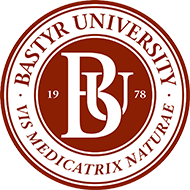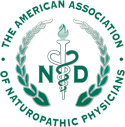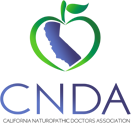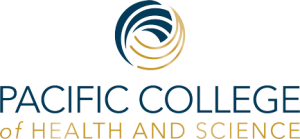Acupuncture
What is Acupuncture?
Acupuncture is a collection of procedures that involves the stimulation of points on the body using a variety of techniques, such as penetrating the skin with thin needles that are then manipulated manually or by electrical stimulation. It is one of the key components of Traditional Asian medicine and is among the oldest healing practices in the world.
How does Acupuncture work?
According to the Traditional Asian medicine approach, stimulating specific acupuncture points corrects imbalances in the flow of “Qi” through channels known as meridians. In Traditional Asian culture, Qi (also Chi or Gi) is an active principle forming parts of any living thing like vitality and vital energy. Qi is frequently translated as “life energy”, “life force”, or “energy flow”. Qi is the central underlying principle in Traditional Asian medicine and martial arts. The literal translation of “Qi” is “breath”, “air”, or “gas”. The ancient Asian described it as a “life force”. They believed Qi permeated everything and linked their surroundings together. They likened it to the flow of energy around and through the body, forming a cohesive and functioning unit. By understanding its rhythm and flow they believed they could guide exercises and treatments to provide stability and longevity.
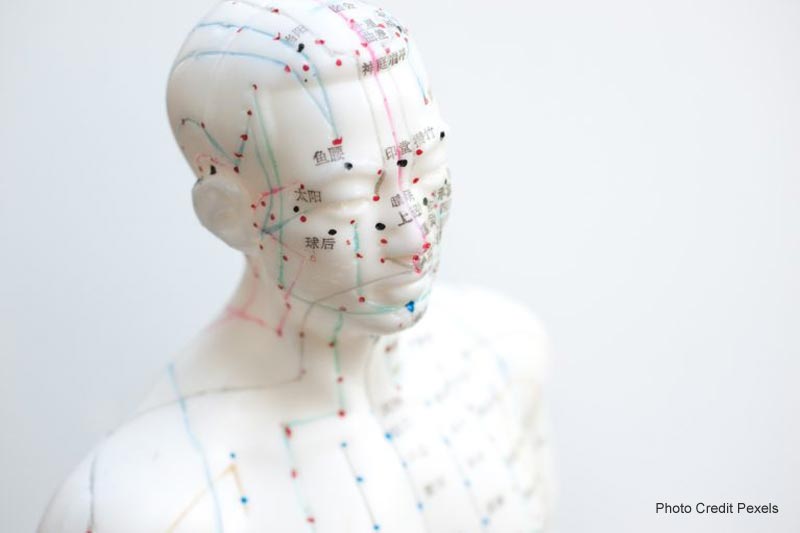
Yin and Yang, and Five Element Theory
Yin and Yang, and Five Element theory is the foundation of Eastern philosophy which gave birth to Traditional Asian medicine. Yin and Yang are derived from Tae Geuk, then it goes through separation and unification. From this movement, new characteristics are derived which is called Five Element. Everything in the universe has in it and goes through this movement. Ancient theologists found out these characteristics in the order of nature. If this Five Element movement merges together, it forms the shape, and if this movement separates again, it goes back to its pure Five Element energy. Thus, Five Element has both aspects of incorporeal and corporeal characteristic which is able to apply to the universal order. The Five Element named Wood, Fire, Earth, Metal, Water has the meaning for both this shape and characteristics. And this theory becomes the foundation of Traditional Asian medicine which we can modify and manipulate in the body as a Qi movement when we are treating diseases.
Pulse Diagnosis
Pulse diagnosis is one of the main diagnostic methods used by ancient practitioners. From the pulse diagnosis, practitioners can easily understand the disease’s characteristics and severity better. Thus, it is one of the indispensable diagnostic methods. The heartbeat appears as a wave and this wave has many other meanings but it means meridian in Traditional Asian medicine. And practitioners can understand the status of health of a person by feeling this pulse.
There is five Zhang (Jang) organ system in Traditional Asian medicine. And practitioner can feel these five Zhang organ’s pulse from a certain location of one’s wrist where the radial artery lies. It is called Cun (Chon), Guan (Kwan), Chi (Chuk) position in the wrist. The basics of the pulse can be felt by big or small, the shape of the pulse, height, strong or weak, fast or slow, excess (shi) or deficient (xu).
And there is six Fu (Bu) organ system in Traditional Asian medicine. And the practitioner can feel this six Fu organ’s pulse from a certain location of one’s wrist where the radial artery lies. It is called Cun, Guan, Chi position in the wrist. However, it is slightly different from the five Zhang organ’s pulse position. Since it is the Fu organ’s pulse, it can be felt on the surface aspect of the Cun, Guan, Chi position. And skilled practitioners can feel excess (shi) or deficient (xu), characteristics, strong or weak, the height of the pulse from five Zhang organ system and six Fu organ system, and able to modify it to harmonize Qi and blood.
There are four ways to understand pulse diagnosis. The first one is to check Renying (Yin Young) and Cunkou (Chon Gu) pulse to see if there is Yang excess (shi) or Yin excess (shi). If Renying is stronger than Cunkou, the person has Yang excess, if Cunkou is stronger than Renying, the person has Yin excess. To harmonize Yin and Yang energy, the practitioner can modify the Yin or Yang meridian to either make it float or submerge by acupuncture treatment.
The second one is to check the excess or deficiency of Zhang Fu’s pulse from the Cunkou pulse. The practitioner can understand engendering or controlling of Zhang Fu system by taking this pulse, and able to make the Qi ascend or descend by acupuncture treatment.
The third one is to distinguish the 27 pulses from the Cunkou pulse. By doing that, the practitioner is able to understand the characteristics of the disease and what kind of Six Evils (Six Pernicious Influences) derived the disease, and the practitioner is able to treat with acupuncture.
The last one is to distinguish the Four Body Constitution of the person by taking the Root pulse of the Zhang organ pulse. And the practitioner is able to modify the Qi to ascend, descend, in or out by acupuncture treatment.
Four Constitutions
In Traditional Korean medicine, there is Four Body Constitution analysis when distinguishing the body’s energy type. Dr. Lee Jae Ma from the Chosun dynasty in Korean history established the Four Constitutional system in Traditional Korean medicine. The four different Constitution is formed from the difference between the energetic strength and weakness among the Zhang organs. This difference gives rise to the major four types of Body Constitution and their characteristics. The Four Constitutions are named Tai Yang (Tae Yang), Tai Yin (Tae Eum), Shao Yang (So Yang), and Shao Yin (So Eum). It has a different approach to each type of Constitution with respect to treatment since it has different weaknesses, strengths, suitable food or herbs, character, and mentality. The biggest Root pulse of the Zhang organ’s pulse presents the Constitution of a person.
The Six Evils
The Six Evils or Six Pernicious Influences are described in the Classics of Traditional Asian medicine. The Six Evils are derived from the Five Element which is filling up the universe. When the Five Element movement comes close to the Earth it changes to the Six Pernicious Influences which a person can feel in their body. The Six Evils has the foundation on Wood, Fire, Earth, Metal, and Water but the new Fire appears because the Earth’s axis is tilted 23.5 degrees from the plane of its orbit around the sun. The Six Evils are Wind, Cold, Summer Heat, Dampness, Dryness, and Fire. The season changes are based on this Six Evils movement, and it can affect a person’s body and health which can cause illness or diseases.
Does Acupuncture hurt?
Acupuncture is usually a very gentle technique utilizing “hair-thin” needles. Most people do not feel pain with gentle techniques.
What are the side effects of Acupuncture?
Very minimal side effects can occur occasionally such as mild bruising and soreness but normally disappears in a few days.
What Acupuncture can treat?
Acupuncture’s use for certain conditions has been endorsed by the United States National Institutes of Health, the National Health Service of the United Kingdom, the World Health Organization (WHO), and the National Center for Complementary and Alternative Medicine.
WHO has listed the following symptoms, diseases, and conditions that have been shown through controlled trials to be treated effectively by acupuncture
- low back pain
- neck pain
- sciatica
- tennis elbow
- knee pain
- peri-arthritis of the shoulder
- sprains
- facial pain (including craniomandibular disorders)
- headache
- dental pain
- temporomandibular (TMJ) dysfunction
- rheumatoid arthritis
- induction of labor
- correction of malposition of the fetus (breech presentation)
- morning sickness
- nausea and vomiting
- postoperative pain
- stroke
- essential hypertension
- primary hypotension
- renal colic
- leukopenia
- adverse reactions to radiation or chemotherapy
- allergic rhinitis, including hay fever
- biliary colic
- depression (including depressive neurosis and depression following stroke)
- acute bacillary dysentery
- primary dysmenorrhea
- acute epigastralgia
- peptic ulcer
- acute and chronic gastritis
Cupping
Cupping is one of the Traditional Asian medicine methods of applying acupressure by creating a vacuum on the patient’s skin to dispel stagnant blood and lymph, thereby improving qi and blood flow and to improve the immune system. Cupping can be used to treat the common cold, and musculoskeletal conditions for pain or stiffness on the back, neck, shoulder, and other joints.
CranioCervical Meridian Balancing Restoration Treatment
Restore the optimal brain circulation and nervous system function
Temporomandibular joint treatment
Are you suffering from these symptoms?
Headache that persists even after taking medication
So tired that you don’t want to open your eyes
Poor concentration
Facial asymmetry
Recurrent dizziness and tinnitus
Helpless and depressed
Whole body muscle pain without cause
Moderate to severe temporomandibular joint pain
The cause is an imbalance in the temporomandibular joint in connection to its position with C1/C2 vertebrae
Bad posture, injury, or congenital issues cause an imbalance between the temporomandibular joint and cervical vertebrae 1 and 2
Causes imbalance in the jaw, face, and neck
Pathological stimulation of peripheral cranial nerves and pituitary-thalamic structures
Causes various symptoms
CranioCervical Meridian Balancing Restoration Treatment
1. Front/left/right/height balancing of the temporomandibular joint
2. Correcting imbalances in the chin, face, and head
3. Restoration of cervical vertebrae 1 and 2 distortion
4. Restoration of dura mater tension
5. Improvement of whole body imbalance/various symptoms from correcting and restoring meridians of the body
Effects after CranioCervical Meridian Balancing Restoration Treatment
Neck and shoulders become lighter and more comfortable
Your head becomes clearer and your eyes become brighter
As the spinal nerves and dura mater tension are corrected, pain/numbness/paralysis throughout the body improves
Acupuncture meridians are energy (Qi) channels that run throughout the whole body and when it is corrected and balanced, our body gains the natural healing power
MBR treatments do not necessarily change the posture permanently but the symptoms are improved
Good for facial asymmetry / facial neuralgia / Bell’s palsy
Good for dizziness/tinnitus/indigestion
“I’m curious about the CranioCervical Meridian Balancing Restoration Treatment process”
Treatment process:
1. Biting the CranioCervical Meridian Balancing Restoration bite device
2. Delicately check cervical spine movement
3. Production of balancing device in appropriate cervical spine position
4. After that, wear the device as directed for 2-3 days
5. When the position of the temporomandibular joint changes, visit our clinic to create the next level of balancing devices
6. CranioCervical Meridian Balancing Restoration is repeated until the meridians are balanced and/or treatment goals are achieved
Jaw problems, headaches, and brain function symptoms recover quickly
CranioCervical MBR Treatment
* Correct CranioCervical imbalance by balancing the front/left/right/height of the temporomandibular joint -> Restoring the balance of the body
Foot Meridian Balancing Restoration Treatment
What are the symptoms of the imbalanced meridian and flat feet?
- Leg cramps
- Muscle pain (aches or fatigue)
- Heel, foot, and ankle pain
- Abnormal walking pattern
- Bunions
- Shin Splints
- Knee, hip, and low back pain
- Plantar fasciitis
- Hammertoe
- Posterior tibial tendon dysfunction
What are the causes of the imbalanced meridian and flat feet?
Inward rolling and flattening of the feet – pronation of the feet – affects your posture
Infants & Children
- Heredity
- Laxity of ligaments
- Tight Achilles tendon
- Lack of foot exercise
Adult
- Achilles Equinus contracture
- Coalition of rearfoot joints
- Failed or injured tendons
- Arthritis
- Marfan syndrome
- Diabetes
- Obesity
- Pregnancy
- Overuse & strain
- Injury & fractures
- Age
Imbalanced meridian and flat feet may increase your risks such as:
- Arthritis
- Bone spurs
- Bunions or corns and calluses
- Plantar fasciitis
- Lower back pain, hip pain, or knee pain
- Shin splints
- Chronic muscle strain due to lack of stability
Why do the imbalanced meridian and flat feet cause fatigue?
Walking with imbalanced meridian and flat feet is like driving with a flat tire and inefficient energy use
How do the imbalanced meridian and flat feet affect your overall health?
As the foot arch collapses, the lower legs tend to rotate inward. This inward rotation can affect the entire body, including the hips, knees, and ankles, leading to long-term leg and back pain
Flat feet are not as proficient at keeping the body stable. As a consequence, people with flat feet are at a higher risk of developing chronic muscle strain as the muscles of the body are forced to compensate for the foot’s lack of stability, overusing muscles that are not meant to work that way
Signs and Symptoms of leg length discrepancy
- Problems walking, such as toe-walking, limping, or a waddling gait
- Postural problems, such as an uneven or tilting shoulder
- Pain in the knees, hips, back, or ankles
- One leg is visibly shorter than the other leg
- A knee that’s chronically hyperextended on the short side and flexed on the long side
We analyze the posture and acupuncture meridians of your body and provide a personalized treatment plan using the MBR acupuncture method!
Other Modalities
Fee Schedule
Acupuncture
Cash price:
$ 150
for initial acupuncture treatment
$ 99
for follow-up acupuncture treatment
MBR Meridian Balancing Restoration treatment fees are additional.
Insurance Coverage for Acupuncture
We accept major health insurance for acupuncture services.
Health insurance (Aetna, Anthem, Blue Cross Blue Shield, Blue Shield CA, Cigna, Covered California, Health Net, Landmark, Optum, United Health Care, etc.)
Tri-West (VA), Veterans
CleverCare, AARP (MediCare Advantage plans)
Auto accident, Auto insurance, Personal injury cases
Workers’ Compensation
Travelers’ insurance, Student
Patient is responsible for co-payment/co-insurance or deductible.
The cash price reflects our discounted out-of-pocket fee. If you are using your insurance, our regular fee schedule will be applied.
If you have a health savings account or a flexible spending account, you may also be eligible to cover the cost of our services.
